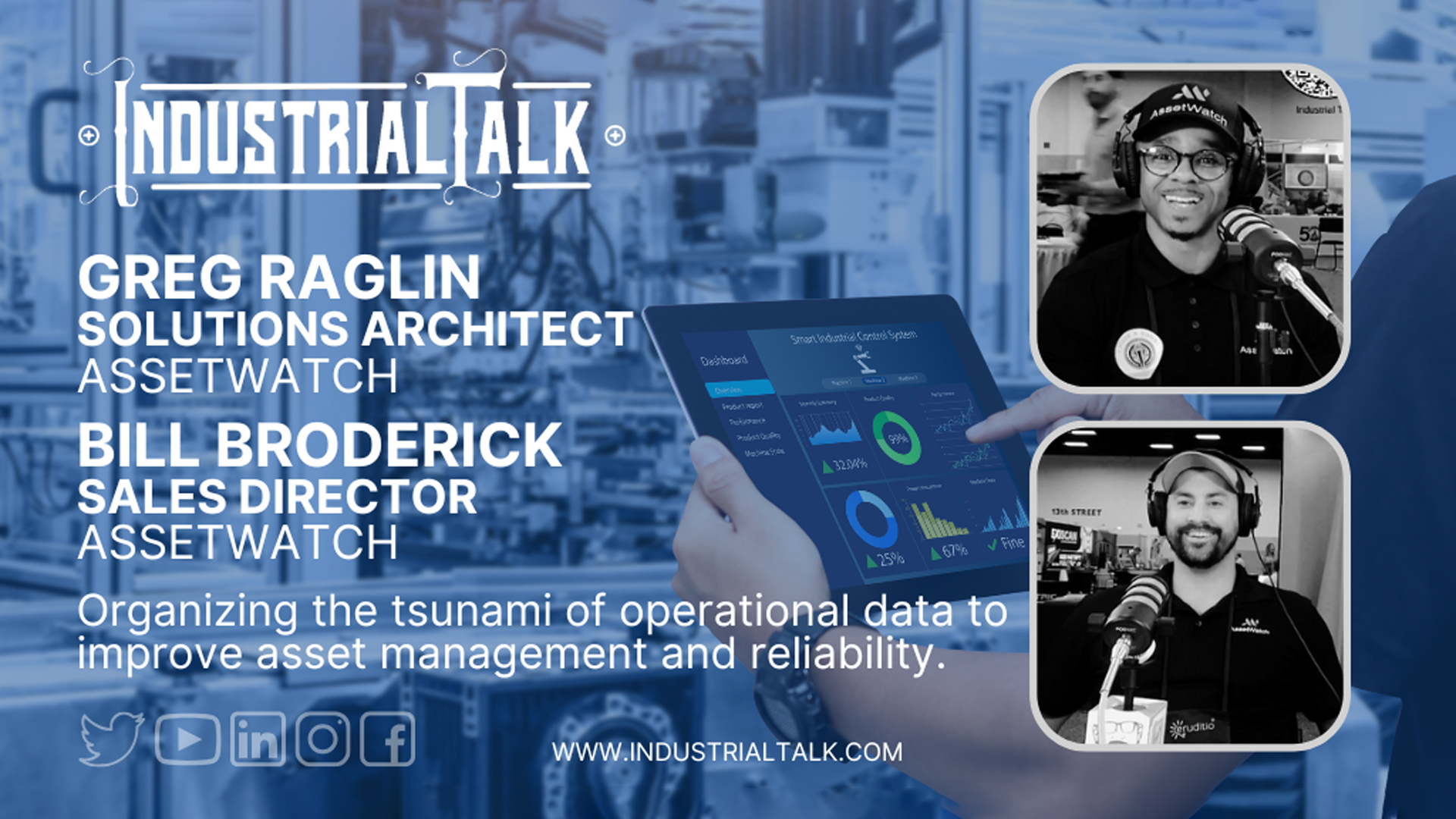The costs of running machines to failure are sky high. The stress, the need for new equipment, the lost production time—these can have a deeply negative effect on the manufacturing work environment, the consistency and quality of output, and the environmental impact of manufacturing operations.
Although reactive maintenance costs are hard to bear, they're also easy to avoid. Today's condition monitoring technology, coupled with strong expert support, enables maintenance teams to detect issues early enough that they can calmly take corrective action or schedule tasks with plenty of lead time. While drastically lowering the probability of failure, condition monitoring can also lower maintenance costs, boost productivity, maximize production, and extend equipment lifespan.
If you're curious about how condition monitoring systems work—and how to ensure long-term success and optimal value for your plant—we'll cover all that and more below.
What Are the Basic Components of a Condition Monitoring System, and How Do They Work?
The most effective condition monitoring systems include hardware, software, and dedicated condition monitoring experts working together to capture and analyze data, identify potential faults, and diagnose root causes to prevent unplanned downtime and optimize planned maintenance. Readings on more critical equipment such as turbines, motors, and pumps can be taken continuously in real time, while less critical equipment might be subject to periodic readings.
Key components of a condition monitoring system include:
Sensors and Data Collection Devices
Accelerometers, thermocouples, pressure sensors, and other types of devices capture critical parameters such as vibration, temperature, pressure, noise, and/or oil quality. Remote monitoring via wireless sensors enables data capture from distant locations using Internet of Things (IoT) and cloud technologies. Data acquisition systems then collect and transmit data from sensors to a central system for processing.
Data Processing and Analysis Software
Condition monitoring software uses algorithms and analytics to process the raw data. As data fall outside critical parameters, the software can detect anomalies and faults such as imbalances, misalignments, and wear. It can also determine urgency and predict failures, alerting operators and maintenance teams via dashboard or software interface.
Ongoing Expert Support
While AI-powered software can identify equipment issues early, it can also trigger false positives. This is why ongoing human support is the perfect complement to condition monitoring software capabilities—and a critical part of any condition monitoring system.
An expert who is dedicated to a single plant and monitoring real-time data streams will not only filter out excessive alerts, but also provide prescriptive recommendations. It's the ultimate efficiency boost for maintenance teams who might otherwise spend time trying to diagnose problems that don't exist.
Interested in getting started with condition monitoring? Download the predictive maintenance guide and get expert insights and tips you can use to ensure optimal results and long-term success.
The Essential Benefits of Condition-Based Maintenance Using Vibration, Oil, and Temperature Data
Machine vibration monitoring is one of several key proactive maintenance techniques. With the power to pinpoint imbalances, misalignments, and wear in rotating machinery such as turbines, motors, and pumps—a power greatly enhanced by combining vibration, oil, and temperature analysis in a single platform—maintenance teams can keep critical assets running smoothly and prevent the next costly breakdown.
Continuous or route-based monitoring of vibration data using triaxial sensors offers a host of benefits for manufacturing facilities. These include more uptime, maintenance cost savings, higher efficiency, greater plant productivity and profitability, reduced risk of workplace hazards, improved equipment reliability, and improved sustainability by way of lower energy usage and less industrial waste.
8 Factors You Should You Consider When Evaluating Condition Monitoring Systems
When comparing condition monitoring solutions, it's essential to evaluate a variety of factors to ensure the chosen solution meets your operational needs, budget, and performance requirements. The following questions can help you zero in on the compatibility and capabilities of the system you're considering, as well as any additional value the provider offers to ensure seamless implementation and ease of use.
1. Is the System Compatible with Your Operation?
- Are the sensors suitable for the machinery or assets you need to monitor?
- Can the system easily expand to accommodate additional equipment or sensors in the future?
- How easily does the software integrate with your existing tech (e.g., SCADA, CMMS, ERP systems)?
- Can the system withstand environmental factors such as extreme temperatures, dust, or moisture?
2. Does It Offer the Type(s) of Monitoring Your Facility Requires?
- Do you need continuous real-time monitoring, periodic checks, or both?
- Can the vendor help you assess the criticality and complexity of the equipment being monitored?
- Do you need remote access, especially for geographically dispersed assets?
3. How Capable Is the System?
- How precise and reliable are the sensors?
- Can the system monitor all relevant parameters (vibration, temperature, acoustic emissions, oil quality, etc.)?
- Does the system process data in real-time and provide actionable insights?
- Does the system have AI or machine learning capabilities for predictive maintenance?
4. How Easy Is the System to Use?
- Is the interface is user-friendly, with clear visualizations and reports?
- Does the solution offer customizable notifications and the ability to set thresholds for different parameters?
- What's the learning curve for operators and maintenance teams, and how much training is needed?
5. How Will Your Facility Connect and Communicate?
- Is there support for wireless (Wi-Fi, IoT, Bluetooth) communication that's adaptable, scalable, and simple to deploy?
- Can data be stored and accessed in the cloud for better scalability and remote monitoring?
- Are robust cybersecurity measures in place for connected systems?
6. Is the System Reliable and Easy to Maintain?
- How reliable is the system and its components (i.e., uptime/availability)?
- Will the provider maintain and calibrate the sensors and system?
- What level of technical support, monitoring support, and warranty coverage should customers expect?
7. What's the Cost and Return on Investment (ROI)?
- What are the hardware, installation, and setup costs?
- Is there a risk-free trial period?
- How much can you expect to pay for software licenses, maintenance, and sensor replacements?
- What's the potential ROI based on expected reductions in downtime and maintenance costs?
10. Will the Vendor Be a Solid Partner?
- What's the manufacturer’s reputation and expertise in the industry?
- Are there ample reviews and/or case studies demonstrating the system’s effectiveness?
- Does the system adhere to relevant industry standards (e.g., ISO 17359 for condition monitoring)?
- How will the vendor support your team after the sale?
How to Achieve the Ideal Setup for Condition Monitoring Success
To ensure the ideal condition monitoring setup for maximum return on your investment, you'll need to strike the right balance between the cost of the system, the criticality of monitored assets, and the actionable insights you'll get. Here’s a guide to designing an optimal setup that delivers increasing value over time.
Prioritize Critical Assets
With your provider's help, you'll need to identify equipment whose failure would have the greatest impact on safety, production, or costs. For high-value or high-risk equipment such as turbines and compressors, or for critical production lines, you'll want to continuously monitor vibration, temperature, and oil quality.
Tiered monitoring, or using advanced systems for critical assets and simpler solutions for less critical ones, will help your maintenance team get the read they need on asset health in the most cost-effective way. For non-critical assets, handheld or portable devices for periodic checks (i.e., route-based monitoring) will usually suffice.
Optimize Data Collection and Analysis
It's crucial to avoid data overload and alert fatigue, which can overwhelm your maintenance team and derail your condition monitoring program. Collect only the data you'll need to make informed decisions, and set thresholds for anomalies to reduce false positives and focus on actionable alerts.
Your provider should have eyes on as well, validating the data to filter out any false positives before your team even sees them. If the software you've chosen provides a user-friendly dashboard and means of communicating directly with a dedicated vibration expert and/or lubrication expert, you'll have everything you need to make informed and timely maintenance decisions.
Integrate with Your Existing Systems
To unlock the full value of a predictive maintenance strategy, having real-time visibility and streamlined workflows is a must. A centralized cloud platform with detailed diagnostics, predictive analytics, and CMMS integration (for seamless work order generation and tracking) offers shared views of equipment health, enhanced efficiency, and the highest probability of preventing equipment failure.
Track and Optimize Your ROI
The right condition monitoring solution will begin paying for itself in a very short time. But how much of a return are you seeing, and how can you increase your ROI long term?
Be sure to quantify the full range of benefits. Measure savings from reduced downtime, extended equipment lifespan, and optimized maintenance schedules. For continuous improvement, use system feedback to refine monitoring strategies and improve asset performance. On an ongoing basis, audit the system's effectiveness at regular intervals and adjust for changing operational requirements.
How easy is it to shift from reactive to predictive maintenance? Watch this on-demand Noria webinar explaining how the City of Tulsa successfully made the transition and optimized their operations.
Optimize Maintenance at Your Facility with Real-Time Data, Analytics, and Expert Support
By selecting a best-in-class condition monitoring solution for your facility and setting your team up for success, you'll have the power to eliminate costly downtime, transform your maintenance operations, and significantly boost machine health and performance. You can monitor the health of your assets remotely and scale your predictive maintenance program effortlessly using IoT technology, cloud-based software, seamless integrations, and expert support, generating immediate results while advancing facility and corporate goals.



.avif)















